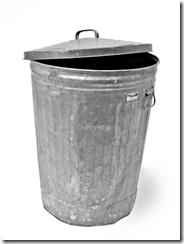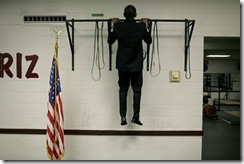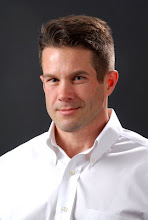I originally published this on my friend Larry
Bodine's online newsletter,
Originate. However, after mentioning it in a few presentations, I got some requests to make it available here as well...
+++++++++++++++

When a cycling legend like Lance Armstrong comes upon a hill that would make even a goat need counseling afterwards, he has three choices. He can conserve energy until he reaches the top, try to continue at the same pace as before or accelerate uphill. What do you think his strategy would be?
He attacks the uphill.
He is not unlike anyone else who is trying to win instead of just finishing the race. Your position on the other side of the hill, and the long flat stretches that follow, are determined with each pedal stroke on the way up. What can we apply from cycling strategy to marketing and business development?
There are a great number of firms have been enjoying the downhill slope of the market for quite some time. This downhill slope is a metaphor for the relative ease it has been to continue to grow profits year over year in a seller’s market, which is similar to a competitive cyclist coasting down a steep hill. It does not mean they are not working hard, but most people would agree that trying to build a practice in an expanding economy is not as arduous as one where clients are much more aware of the fact that they really do have infinite choices.
However, with a looming slowdown in the business community, many lawyers are staring straight at an intimidating, uphill climb for the foreseeable future. What is your strategy? Should you conserve energy until you get to the top (cutting back on business development time and expenses)? Or, should you actually accelerate uphill (invest heavier in business development)? For the answer, let’s look at why Mr. Armstrong acts the way he does when faced with a similar choice.
Lance has been through a lot in his life, and he has won more than his fair share of contests. So, it is reasonable to think that he does not do things the hard way just for the extra challenge. He employs strategies that are proven time and time again.
Lance knows that extensive research has proven that cyclists who are trying to come out ahead, not just finish, must accelerate uphill. The main reason is that more time is added during the climb than can be taken back on the descent. Everyone can go fast on the descent, especially the larger riders that have more strength and weight.
Lawyers and law firms are subject to the same rules. The larger firms have more resources and people and are harder to overtake during times of plenty. Thus, it is competitively advantageous to accelerate uphill and make up any gaps in profitability when others may be coasting, conserving or just being plain lazy.
However, resources (time, money and attention) are finite, so lawyers need to invest in marketing and business development initiatives that are very focused on group of core contacts and have a measurable return on investment. Like a cyclist using a heart rate monitor or other digital training aid, you should be taking advantage of the latest technology since most of your competitors are.
Winners of the legal industry race will be using technology and digital strategies to be able to focus their efforts on this core group of your contacts, send them pinpoint messages on the topics most important to them individually and follow up with those that seem the most interested in what they are saying. Technology exists today to identify these people down to the individual. This allows a lawyer to spend more time building loyalty as opposed to general awareness. In other words, you should be visiting and talking with your best clients instead of broad prospects more than ever.
This technique for cyclists, known as variable power strategy, means you gain ground and overtake your competitors on the uphill slope. It has been demonstrated that it results in the fastest times. In fact, the steeper the hill, the more effective the strategy is. The same holds true for lawyers facing a slowdown in the economy.
Slowdowns favor the more nimble firm or adaptable lawyer. According to the aforementioned study, “…large cyclists can achieve greater downhill speeds, but overall performance still favors smaller cyclists on hilly courses.” In other words, those that can quickly adapt to the change in the course has the advantage over the hulking
megafirm that has to carry all that weight uphill.
++++++++++++++++++
Reference
Swain, D.P. Cycling: Uphill and Downhill. In: Encyclopedia of Sports Medicine and Science, T.D. Fahey (Editor). Internet Society for Sport Science: http://sportsci.org 6 Nov 1998.












 Any of you that know me well know that I adore (Governor)
Any of you that know me well know that I adore (Governor)  Oh my goodness, there are more "foolproof" diet plans out there than you could shake a tasteless, boring carrot at. All of us are definitely in the wrong business. It seems like anyone with some type of initials or suffix after their name can create a plan, market it and sell a million books. It does not really matter if it actually works. By the time most people find out it might be a false yellow brick road to a six-pack, the next diet comes out on the market.
Oh my goodness, there are more "foolproof" diet plans out there than you could shake a tasteless, boring carrot at. All of us are definitely in the wrong business. It seems like anyone with some type of initials or suffix after their name can create a plan, market it and sell a million books. It does not really matter if it actually works. By the time most people find out it might be a false yellow brick road to a six-pack, the next diet comes out on the market.














